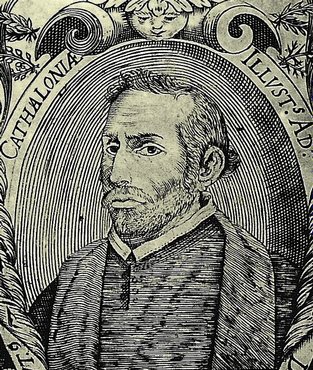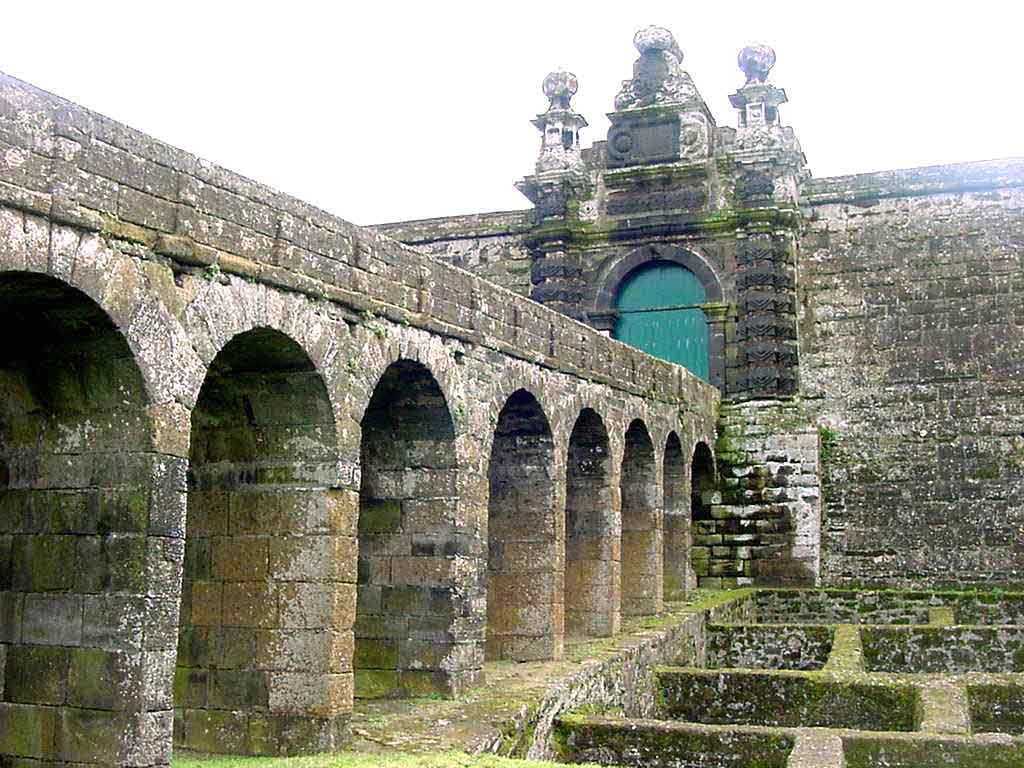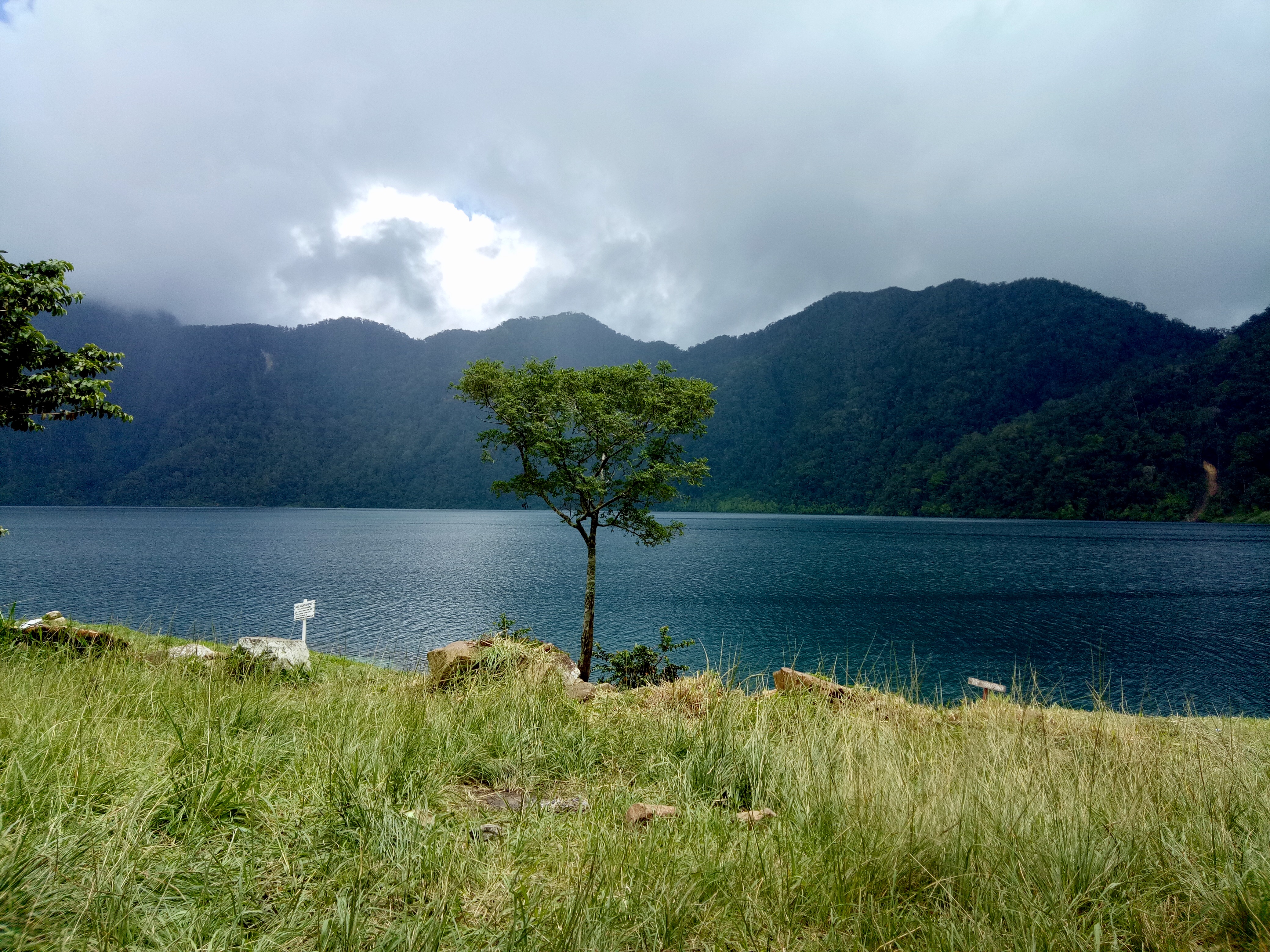|
1641
Events January–March * January 4 – The stratovolcano Mount Parker in the Philippines) has a major eruption. * January 18 – Pau Claris proclaims the Catalan Republic. * February 16 – King Charles I of England gives his assent to the Triennial Act, reluctantly committing himself to parliamentary sessions of at least fifty days, every three years. * March 7 – King Charles I of England decrees that all Roman Catholic priests must leave England by April 7 or face being arrested and treated as traitors. * March 22 – The trial for high treason begins for Thomas Wentworth, 1st Earl of Strafford, director of England's Council of the North. * March 27 – **The Battle of Pressnitz begins between the Holy Roman Empire and Sweden. **The Siege of São Filipe begins in the Azores as the Portuguese Navy fights to drive the Spanish out. After almost 11 months, the Portuguese prevail on March 4, 1642. April–June * April 7 – The dea ... [...More Info...] [...Related Items...] OR: [Wikipedia] [Google] [Baidu] |
Thomas Wentworth, 1st Earl Of Strafford
Thomas Wentworth, 1st Earl of Strafford, (13 April 1593 ( N.S.)12 May 1641), was an English statesman and a major figure in the period leading up to the English Civil War. He served in Parliament and was a supporter of King Charles I. From 1632 to 1640 he was Lord Deputy of Ireland, where he established a strong authoritarian rule. Recalled to England, he became a leading advisor to the King, attempting to strengthen the royal position against Parliament. When Parliament condemned Lord Strafford to death, Charles reluctantly signed the death warrant and Strafford was executed. He had been advanced several times in the Peerage of England during his career, being created 1st Baron Wentworth in 1628, 1st Viscount Wentworth in 1629, and, finally, 1st Earl of Strafford in January 1640. He was known as Sir Thomas Wentworth, 2nd Baronet, between 1614 and 1628. Early life Wentworth was born in London. He was the son of Sir William Wentworth, 1st Baronet, of Wentworth Woodhouse, near ... [...More Info...] [...Related Items...] OR: [Wikipedia] [Google] [Baidu] |
Catalan Republic (1641)
The Catalan Republic ( ca, República Catalana, ) was a short-lived independent state under French protection proclaimed in 1641 by the States-General of Catalonia led by Pau Claris, during the Reapers' War. The States-General of Catalonia, headed by the President of the Deputation of the General of Catalonia (or Generalitat) Pau Claris, proclaimed the Catalan Republic on 17 January 1641. On 23 January 1641 the ''Braços Generals'' led by Pau Claris proclaimed Louis XIII of France as Count of Barcelona, putting the Principality of Catalonia under French sovereignty. Louis XIII was succeeded upon his death in 1643 by Louis XIV (the 'Sun King'), who remained Count of Barcelona until 1652, when Catalonia was reincorporated into the Spanish Monarchy. History During the Reapers' War which started in 1640 (and included as a part of the Franco-Spanish War) the States-General of Catalonia ( ca, Junta de Braços or ), an extraordinary council of representatives of the Catalan Cour ... [...More Info...] [...Related Items...] OR: [Wikipedia] [Google] [Baidu] |
Pau Claris
Pau Claris i Casademunt (; 1 January 1586 – 27 February 1641) was a Catalan lawyer, clergyman and 94th President of the Deputation of the General of Catalonia at the beginning of the Catalan Revolt. On 16 January 1641 he proclaimed the Catalan Republic under the protection of France. Biography Early years Claris was born in Barcelona (then in the Principality of Catalonia, part of the Spanish Monarchy). His paternal family was from Berga, and both his grandfather, Francesc, and his father, Joan, were prominent jurists in Barcelona. His mother was Peronella Casademunt. Pau was the youngest of four brothers, and his older brother, Francesc, was a lawyer who had a strong influence on his brother's path toward politics. The Claris family belonged to the Barcelonan bourgeois and had significant economic and administrative power.Grau, Jaume. ''Pau Claris. Una vida amb misteris'' (in Catalan). ''Sàpiens'' arcelona núm. 121, octubre 2012, p.54-57. . While it is possible that hi ... [...More Info...] [...Related Items...] OR: [Wikipedia] [Google] [Baidu] |
Charles I Of England
Charles I (19 November 1600 – 30 January 1649) was King of England, Scotland, and Ireland from 27 March 1625 until Execution of Charles I, his execution in 1649. He was born into the House of Stuart as the second son of King James VI of Scotland, but after his father inherited the English throne in 1603, he moved to England, where he spent much of the rest of his life. He became heir apparent to the kingdoms of England, Scotland, and Ireland in 1612 upon the death of his elder brother, Henry Frederick, Prince of Wales. An unsuccessful and unpopular attempt to marry him to the Spanish Habsburg princess Maria Anna of Spain, Maria Anna culminated in an eight-month visit to Spain in 1623 that demonstrated the futility of the marriage negotiation. Two years later, he married the House of Bourbon, Bourbon princess Henrietta Maria of France. After his 1625 succession, Charles quarrelled with the Parliament of England, English Parliament, which sought to curb his royal prerogati ... [...More Info...] [...Related Items...] OR: [Wikipedia] [Google] [Baidu] |
Battle Of Preßnitz
The Battle of Preßnitz (german: Schlacht bei Preßnitz) was a military engagement fought on during the Thirty Years' War. In the battle, Imperial troops under Octavio Piccolomini defeated the Swedish army under Field Marshal Johan Baner. Course of the battle In preparation for the campaign against Regensburg, Swedish troops under Johan Baner made their winter quarters in 1640/1641 in the Upper Palatinate at Cham near the Bohemian border, with the aim of joining forces with the regiments of the French commander, Jean Baptiste Budes de Guébriant. At that time, only the Swedish troops were used to winter campaigning.Geijer, Eric Gustave, ''The History of the Swedes'', tr. by J.H. Turner, London: Whitaker, 1845, p. 307. On 17 March, Baner's camp was attacked by Imperial troops and his army, which was clearly outnumbered and weakened by casualties, became almost surrounded. Baner was forced to beat a hasty retreat to Saxony using the shorter route via Bohemian soil, pursued by ... [...More Info...] [...Related Items...] OR: [Wikipedia] [Google] [Baidu] |
Aegidius Ursinus De Vivere , ...
Aegidius Ursinus de Vivere or Aegidius Ursinus de Vivariis (died 17 April 1647) was a Roman Catholic prelate who served as Titular Patriarch of Jerusalem (1641–1647). Biography Aegidius Ursinus de Vivere was born in Liège, Prince-Bishopric of Liège in 1577 or 1598. On 15 April 1641, he was appointed during the papacy of Pope Urban VIII as Titular Patriarch of Jerusalem. On 23 April 1641, and ordained a priest and on 28 Apr 1641, he was consecrated bishop by Antonio Marcello Barberini, Cardinal-Priest of San Pietro in Vincoli, with Faustus Poli, Titular Archbishop of ''Amasea'', and Celso Zani Celso Zani, O.F.M., also Giuliano Zani (born 1580) was a Roman Catholic prelate who served as Bishop of Città della Pieve (1625–1629). [...More Info...] [...Related Items...] OR: [Wikipedia] [Google] [Baidu] |
Ambrose Barlow
Ambrose Edward Barlow, O.S.B. (1585 – 10 September 1641) was an English Benedictine monk who is venerated as a saint in the Catholic Church. He is one of a group of saints canonized by Pope Paul VI who became known as the Forty Martyrs of England and Wales. Early life and education Ambrose was born at Barlow Hall, Chorlton-cum-Hardy, near Manchester in 1585 (in the parish of Manchester). He was the fourth son of the nobleman Sir Alexander Barlow and his wife Mary, daughter of Sir Urian Brereton of Handforth Hall.Camm, Bede (1907)"Ven. Edward Ambrose Barlow" ''The Catholic Encyclopedia''. Vol. 2. New York: Robert Appleton. Retrieved 10 September 2013. The Barlow family had been reluctant converts to the Church of England following the suppression of the Catholic Church in England and Wales. Ambrose's grandfather died in 1584 whilst imprisoned for his beliefs and Sir Alexander Barlow had two thirds of his estate confiscated as a result of his refusing to conform with the rule ... [...More Info...] [...Related Items...] OR: [Wikipedia] [Google] [Baidu] |
Council Of The North
The Council of the North was an administrative body first set up in 1484 by King Richard III of England, to improve access to conciliar justice in Northern England. This built upon steps by King Edward IV of England in delegating authority in the north to Richard, duke of Gloucester (i.e. before Richard himself became king), and in establishing the Council of Wales and the Marches. It was based in Yorkshire throughout its history: first at Sheriff Hutton Castle and at Sandal Castle, and then at King's Manor, York. Henry VIII re-established the Council after the English Reformation, when the north became identified with Roman Catholicism. It was abolished in 1641, just before the English Civil War. History The first 'council in the north' was established in 1484 by King Richard III of England. The council was administered from Sheriff Hutton. Richard placed the council in the hands of John de la Pole, 1st Earl of Lincoln, who was charged with control primarily of Yorkshire. A sudd ... [...More Info...] [...Related Items...] OR: [Wikipedia] [Google] [Baidu] |
Siege Of São Filipe
The siege of the Fortress of São Filipe, was a battle fought from 27 March 1641 to 4 March 1642 as part of the Portuguese Restoration War, near Angra do Heroísmo, Angra, Azores, between Spain, Spanish and Portugal, Portuguese over the control of the Fort of São João Baptista (Angra do Heroísmo), fort of São Filipe. After 11 months of intense fighting the Portuguese were victorious and the Spanish garrison was defeated with very heavy losses. References Sources *Lourenço, Paula.''Battles of Portuguese History - Defence of the Overseas. - Volume X.'' (2006) {{DEFAULTSORT:Siege of Sao Filipe Sieges involving Portugal, São Filipe Sieges involving Spain, Sao Filipe Conflicts in 1641, São Filipe Conflicts in 1642, São Filipe Battles in the Azores, São Filipe Sieges of the Portuguese Restoration War, São Filipe 1641 in Portugal 1641 in Spain 1642 in Spain ... [...More Info...] [...Related Items...] OR: [Wikipedia] [Google] [Baidu] |
Triennial Act
The Triennial Act 1641 (16 Cha. I c. 1), also known as the Dissolution Act, was an Act passed on 15 February 1641,27. The Triennial Act Constitution Society Accessed 7 May 2008 by the , during the reign of King Charles I. The act required that |
William Ward (priest)
William Ward (real name Webster) (about 1560 at Thornby in Westmoreland – 26 July 1641 at Tyburn) was an English Roman Catholic priest. He is a Catholic martyr, beatified in 1929. Life He was over forty when he went to Douay College to study for the priesthood; no details have been preserved of his earlier life, though he is believed to be a convert from Anglicanism. He arrived there on 18 September 1604; received the minor orders on 16 December 1605; the subdiaconate on 26 October 1607; the diaconate on 31 May 1608; and the priesthood on the following day. On 14 October he started for England, but was driven onto the shores of Scotland, arrested, and imprisoned for three years. On obtaining his liberty, he travelled to England where he worked for thirty years, twenty of which he spent in various prisons. He was zealous and fiery by temperament, severe with himself and others, and especially devoted to hearing confessions. Though he had the reputation of being a very exac ... [...More Info...] [...Related Items...] OR: [Wikipedia] [Google] [Baidu] |
Mount Parker (Philippines)
Mount Mélébingóy, formerly known as Parker Volcano, is an active volcano on Mindanao island in the Philippines (6°06.8' N, 124°53.5' E). It is located in the province of South Cotabato, west of General Santos City and south of Koronadal City. The volcano's English name is taken from an American, General Frank Parker, who spotted the mountain and claimed to have "discovered" it during a flight he piloted in 1934. Parker led an expedition up to the lake in the mountain's crater with other US colonial and Filipino government officials, including Vice-Governor-General Joseph Ralston Hayden and Provincial Governor Gutierrez, in the fall of 1934.J. R. Hayden to Captain C. Morera, September 4, 1934 AND Hayden to Gov. Gutierrez, January 15, 1935, Joseph Ralston Hayden Papers, Box 27, Folder 32, Bentley Historical Library, University of Michigan. Physical features The elevation is given as by some sources and as by others. The volcano has a base diameter of . It has a wide c ... [...More Info...] [...Related Items...] OR: [Wikipedia] [Google] [Baidu] |
.jpg)





